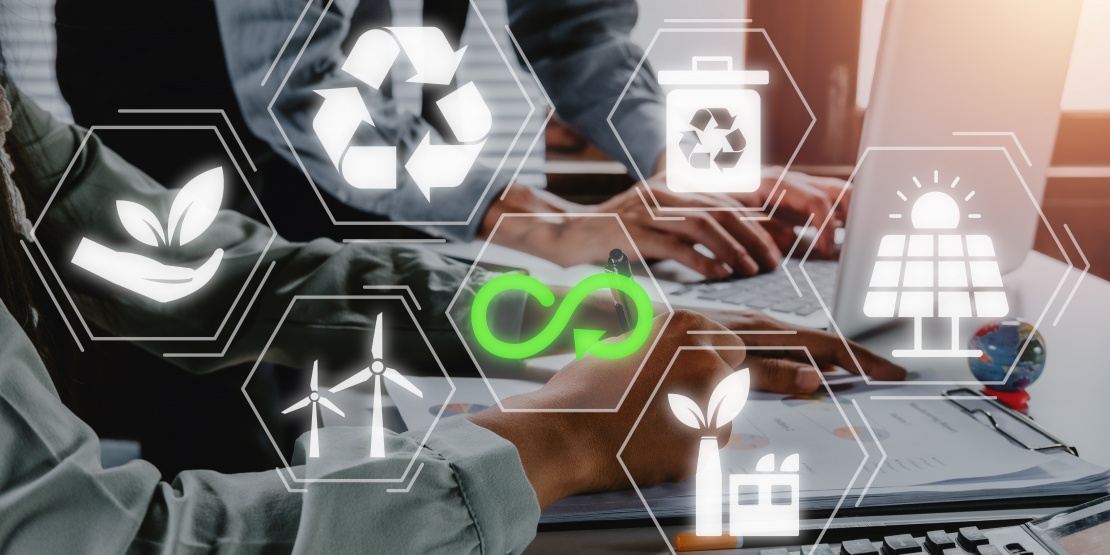The environment and climate crisis is an undeniable reality. To curb this phenomenon, we must act quickly and reduce carbon emissions in our lives, both individually and at work. According to a study by Accenture, data shows that more than a third of the world's largest companies have committed to being carbon neutral by year 2050, but the majority of these will fail to achieve this goal unless they reduce their greenhouse gas emissions rapidly and drastically. This change in direction is becoming a matter of strategic survival for companies that need to limit their carbon impact and, more broadly, the company’s carbon footprint while also remaining competitive.
Awareness is spreading
Today, people are truly beginning to realise the stalemate of the current growth model and its associated risks. While people, in general, are increasingly devoted to minimising their carbon footprint at an individual level, businesses are not finding it quite so simple. As businesses are the highest producers of greenhouse gas emissions, they have to heavily reflect on how to integrate the transition to low carbon into their strategy.
Faced with the climate emergency and new challenges in society, the level of commitment made by businesses towards reducing their ecological footprint continues to grow, which is at once both positive and encouraging. They are motivating themselves to resolve the conflict between climate emergency and financial priorities. Many forums are flourishing in the form of business clubs or networks, not to mention training to explain the link between financial performance and climate change.
Carbone 4 is a consulting agency which specialises in low-carbon strategies and adapting to climate change, as part of which the Carbone 4 Academy was set up, in response to a deluge of requests for training. According to the founder, Alexandre Florentin, a real sea change is underway. This involves first reporting and calculating, while taking into account the specifics of each business, identifying and understanding the levers for reduction better, as well as controlling emissions factors and uncertainty. Aware of the powerful force they represent by taking on their ecosystem, participants jointly sense the impetus to measure and build a more sustainable future.
But clarity above all else. Despite a very real awareness and a desire to grasp the issues better, greenhouse gas emissions from companies in Europe and around the world continue to increase dramatically.
What about climate-related risks and opportunities?
The question is no longer whether to be at the forefront of climate transition to reduce company carbon footprint, but how this can be done without losing competitiveness in the short and medium term. However, companies face a dilemma: escalate turnover by increasing volume on the one hand, and reduce emissions on the other - especially since this transition is also a quid pro quo of remaining competitive in the long term.
In this scenario, it is better to think in terms of risks and opportunities. Successive crises (ecological, health or even geopolitical) remind us how uncertain the future can be. It is in within this scope and context that financial operators must make organisational decisions affecting their business model.
The whole challenge lies in transforming risks into opportunities by opting for sustainable energy sources or by standardising alternative, ethical materials or goods, for instance. Especially since, with new industries (electric cars, the health of the future, solar panels, wind turbines, etc.) leading the transition towards compliance with sustainability, these opportunities will increase tenfold.
Circular economy: tremendous potential to be exploited
The solution can come from the circular economy which, if put at the very heart of business strategy, makes it possible to optimise resources and transform supply strategies with long-term financial benefits.
Indeed, new models of production and consumption linked to the circular economy are an effective way to calculate and reduce greenhouse gas emissions, while also creating value. Several levers exist:
- Sustainable procurement;
- Eco-design;
- Ethical consumption;
- Extending service life;
- Improving waste prevention and management, etc.
Every department within a business is made aware and involved, including the procurement department, which is directly connected with suppliers. It must put in place a system for reflecting on the standard to optimise the use of resources. It is then possible to shift over to products with lower carbon intensity, such as:
- Products manufactured from recycled materials;
- Refurbished products;
- Second-hand goods, etc.
This is also the case with value-added services, such as repairs, equipment rental, or the recovery and upgrading of products, for instance.
Of course, the circular economy is part of a global approach. These new models of production and consumption also boast a local, inclusive, and united dimension. Consequently, procurement departments that choose the circular economy make a greater contribution to the Corporate Social Responsibility (CSR) strategy while reducing their company carbon footprint.
These days, companies must face the ecological and climate challenge head-on by aligning their activities with the international objectives outlined under the Paris Agreement. Blocking their way to challenging sustainable financial models and remaining competitive stand issues as yet unknown, plus regulatory constraints and the physical constraints of the planet.
- Download our "Procurement Policy and CSR" white paper









